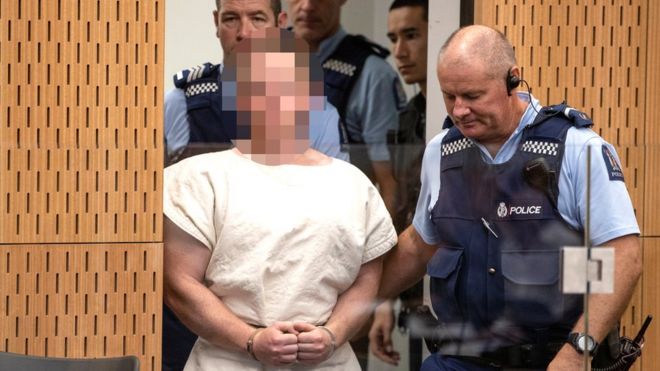 REUTERS
REUTERS
The man charged over Friday's twin mosque attacks in the New Zealand city of Christchurch is believed to have acted alone, police say.
Australian Brenton Tarrant, 28, a self-described white supremacist, live-streamed the attack on Facebook.
Three others arrested afterwards are not believed to have been involved, Police Commissioner Mike Bush said, but added that he could not be conclusive.
Fifty people were killed and 50 injured in what is New Zealand's worst attack.
Two remain in a critical condition.
Commissioner Bush said authorities were working as fast as they could to finish formally identifying the victims of the attacks at the Al Noor and Linwood mosques.
He added that it was a sensitive process and that he was "aware of the cultural and religious needs".
Who was involved?
On Saturday, the main suspect appeared in court in a white prison shirt and handcuffs, smiling for the cameras.
He has been charged with one count of murder - with more charges expected to follow.
Commissioner Bush told a news conference that the 28-year-old was the only person charged with carrying out the shootings.
"He was stopped because he was believed to be a direct threat, our staff acted with absolute courage in intervening and had to use some force... they put themselves in harm's way to stop any further attack - and I do believe they did prevent further attacks," he said.
Commissioner Bush said police did not believe that two people arrested near the scene were involved. A woman was released without charge and a man was charged with firearms offences.
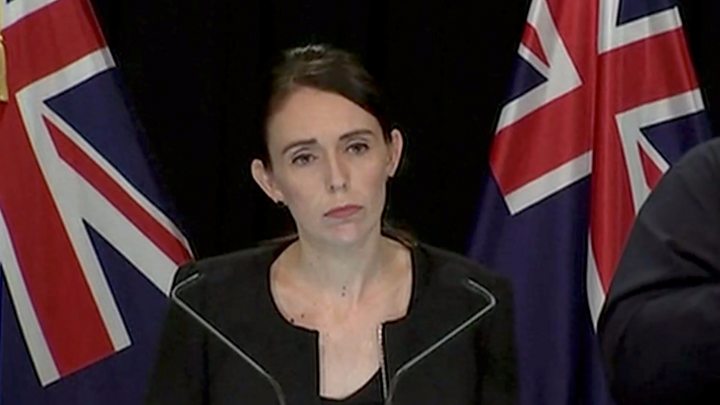
An 18-year-old was also arrested but his involvement was said to be "tangential" and he would appear in court on Monday, Commissioner Bush added.
However he cautioned: "I will not be saying anything conclusive until we are absolutely convinced as to how many people were involved."
None of those detained had a criminal record.
Mr Tarrant has been remanded in custody without a plea and is due to appear in court again on 5 April.
The presiding judge ruled that the suspect's face should be pixellated in photographs and moving images to preserve his fair trial rights.
Prime Minister Jacinda Ardern said Mr Tarrant had a firearms licence and owned five guns.
Brave interventions
Histories of bravery have been emerging in the aftermath of the attacks.
Two of the six Pakistanis killed - Naeem Rashid, 50, and his 21-year-old son Talha - had been living in New Zealand since 2010.
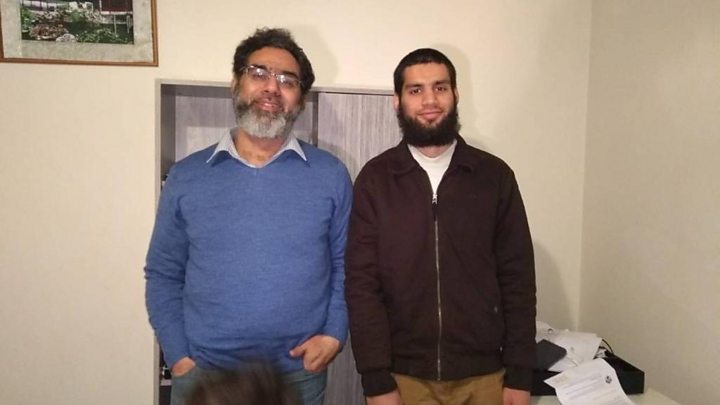
Mr Rashid has been hailed as a hero on social media after being seen in a video of the attacks apparently trying to tackle the gunman at Al Noor mosque before being shot.
His brother Khursheed Alam in the northern Pakistani city of Abbottabad, told the BBC's Secunder Kermani he was proud of his actions.
"He was a brave person," Mr Alam said. "I've heard from people there... there were a few witnesses who said he saved a few lives by trying to stop that guy."
But he went to add that even though his brother was being hailed as a hero by some people, it was "still a shock for us".
"It's our pride now, but still the loss - it's like cutting your limb off really."
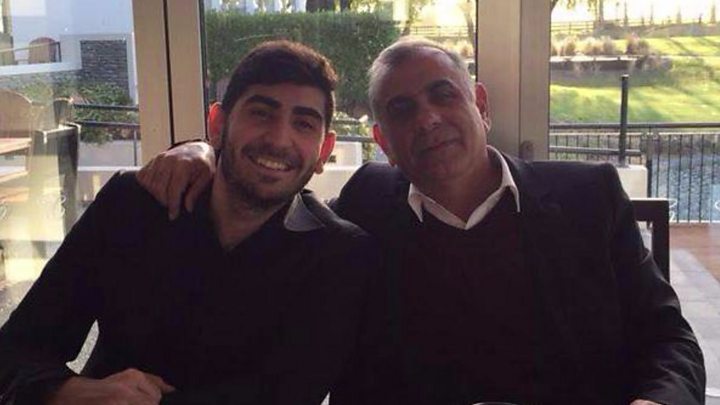
Mr Alam said he was angry.
"Terrorists don't have a religion," he said, adding "crazy people" had to be stopped.
At the other mosque attacked, in Linwood, a similar intervention occurred.
Abdul Aziz says he ran towards the gunman outside the mosque, throwing a credit card machine at him.
In the ensuing chase, the gunman dropped one of his weapons and went to fetch more from his car, when Mr Aziz tossed the gun towards him, smashing the car window.
The gunman then drove off and was arrested moments later.
Officials in New Zealand are now carrying out the difficult task of identifying those who died. They have shared a list of victims with families, but not released it publicly.
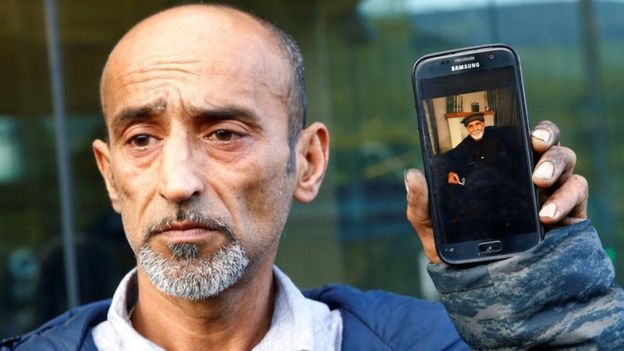 REUTERS
REUTERS
Some of the other victims were:
- Sayyad Milne, 14, who wanted to be a footballer when he grew up
- Daoud Nabi, 71, who is believed to have thrown himself in front of other people in the mosque to protect them
- Khaled Mustafa, a refugee from the war in Syria
- Hosne Ara, 42, killed while searching for her husband who uses a wheelchair - he survived
How events unfolded
The first report of an attack came from the Al Noor mosque in central Christchurch during Friday prayers at 13:40 (00:40 GMT).
A gunman drove to the mosque, parked nearby and began firing into the mosque as he walked in through the front entrance. He fired on men, women and children inside for about five minutes. He live-streamed the attack from a head-mounted camera and identified himself in the footage.
The suspect is then said to have driven about 5km (three miles) to another mosque in the suburb of Linwood where the second shooting occurred.
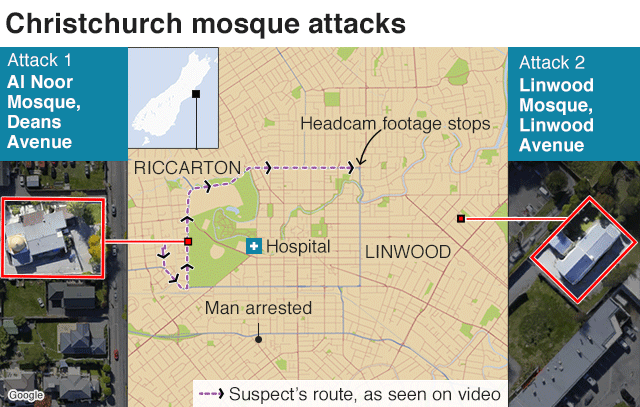

Ms Ardern said the guns used by the attacker appeared to have been modified, and that the suspect's car was full of weapons, suggesting "his intention to continue with his attack".
He had obtained a gun licence in November 2017 that allowed him to buy the weapons used in the attack.
The suspect had not been on the radar of security services in New Zealand or Australia.

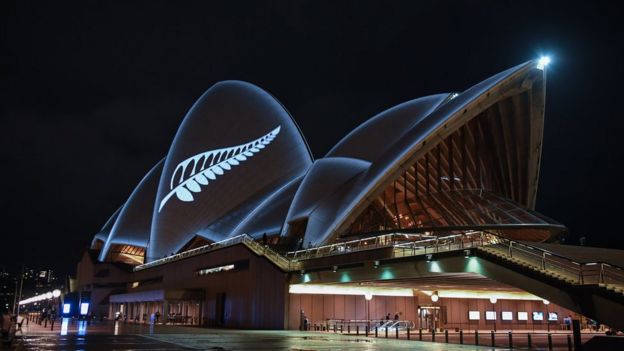 GETTY IMAGES
GETTY IMAGESSuspect's message
Before the attacks, social media accounts in the name of Brenton Tarrant were used to post a lengthy, racist document in which the author identified the mosques that were later attacked.
The text is called The Great Replacement, a phrase that originated in France and has become a rallying cry for European anti-immigration extremists. The man said he had begun planning an attack after visiting Europe in 2017 and being angered by events there.
The suspect sent the document to 70 people, including to Ms Ardern's generic address, less than 10 minutes before the attack, the New Zealand Herald reports.
Asia
US threw away 'golden opportunity' - N Korea
- 15 March 2019
- Asia
'I pretend to be a man so I can work'
- 17 March 2019
- Asia

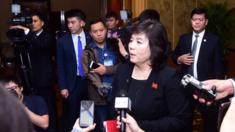

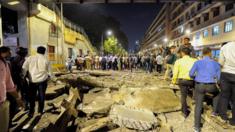
No comments:
Post a Comment